Sporting colourful timeless PlayStation 1-era pixel visuals, reminiscent of Breath of Fire IV and the ethos of Chrono Trigger, RPG Terra Memoria jumps out from the plethora of games available this month. It’s full to bursting with anthros, or furry characters, a story of crystals and environmental change and battles that offer something new and unique to turn-based combat. Let’s take a look inside and see if it’s as good as it looks.
The world of Constancy is going through some changes. Long relied on, crystal power no longer works, the crystals are in short supply and strange automatons are reawakening and terrorising the country. Into this strange new world stride a small group of unlikely adventurers, hellbent on meddling their way through every town and village, and perhaps solve a few problems on the way, not least of which, their own; Syl, a young fox summoner, on the trail of her missing parents; Moshang, a giant rhino mage, who wants to solve the world’s problems with magic; Edson, an engineer of sorts, trying to investigate the awakened automatons; Meta, a strange shapeshifter who seems to be able to access ancient tech; Opal, a blacksmith seeking a way to protect her village; and Alto, a bard, more interested in the story and poetry of the adventure than in his own place in it.
The story of Terra Memoria is a slow burn that’s rarely interested in epic narrative and more in the everyday problems of ordinary folks. The overall story concerns the theft and then tracking down of the land’s missing crystals. All the changes Constancy is going through are seen through the eyes of those affected and what the loss of crystal power is doing to their livelihoods or how it’s fomenting small-scale rebellion. These are personal stories of lost parents or finding your identity, rather than overmuch about saviours and the overthrowing of gods like some RPGs concern themselves with.
Terra Memoria feels very grounded, but with that same approach it can also feel pedestrian and a little dull. The characters are an endearing bunch, but have little in the way of depth so I rarely felt drawn in on a character level. Instead, they get involved in every little problem facing NPCs across the different towns and areas you visit. The minutiae of these quests and tasks, and how they link constantly into each other, drew me along for hours at a time. The NPC’s problems, at least in the moment, were often more important than the larger story of finding Syl’s parents for example.
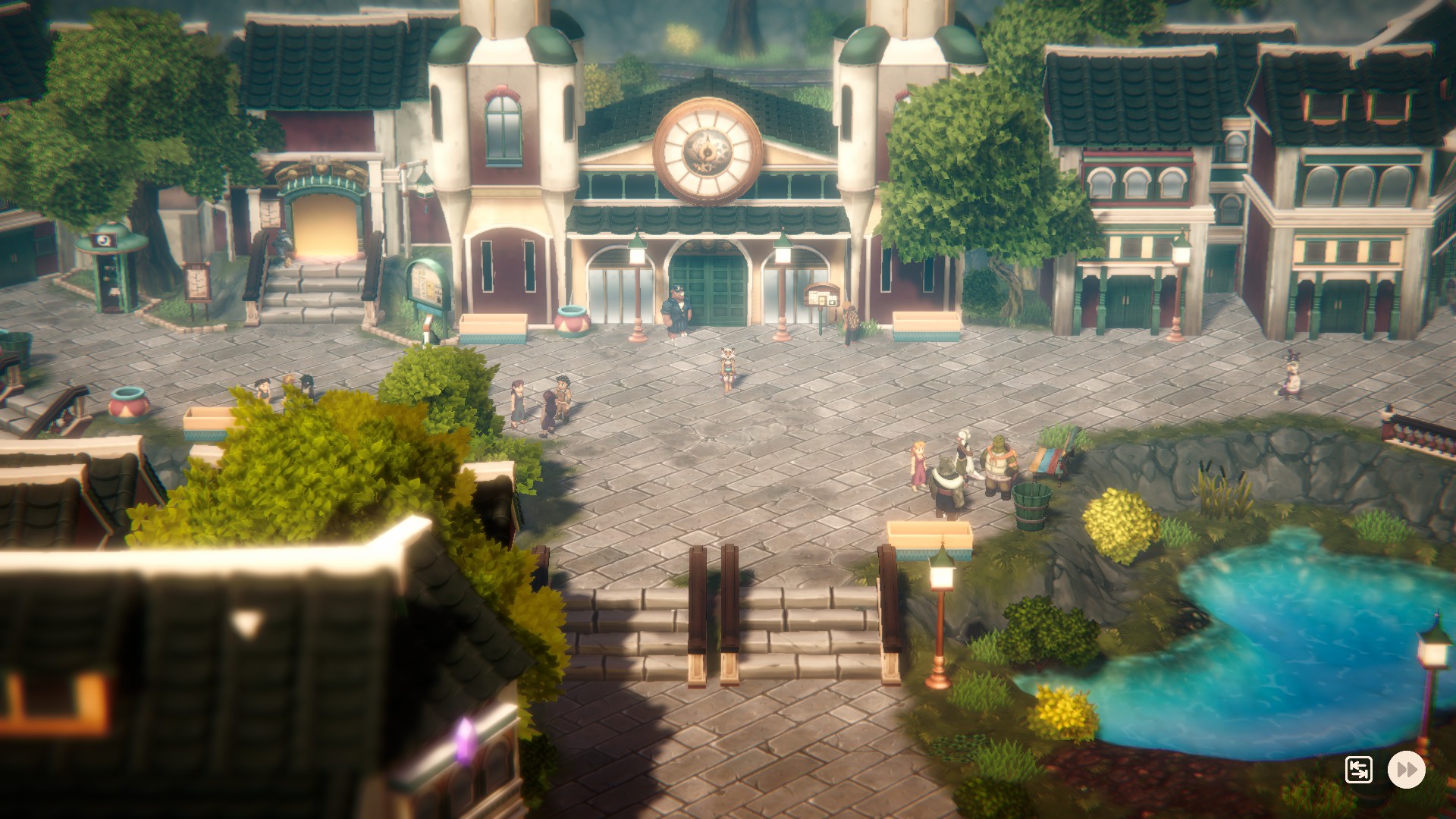

As you follow the story you’ll be constantly bombarded with quests, literally all the time, but mostly they are just a neat frame around which to structure the various ‘go here, do this’ of the story. Though the game has a number of nice-looking areas, everything feels very small and discrete, and solving a quest can very often be as simple as walking two screens over. The requirements put on the player are exceptionally simple, almost casual, and rarely do they demand much thought – the quest structure does that for you, handholding relentlessly throughout the game. It allowed me to just let the story wash over me, but it wasn’t the most engaging style.
You are able to change between all six characters as your avatar at any time, giving each something like equal status. No one is quite the main character, even if you start with Syl and Moshang. Gameplay requirements are simple, fitting in with the cozy description of the game, undemanding and casual. The far more engaging aspect is combat.
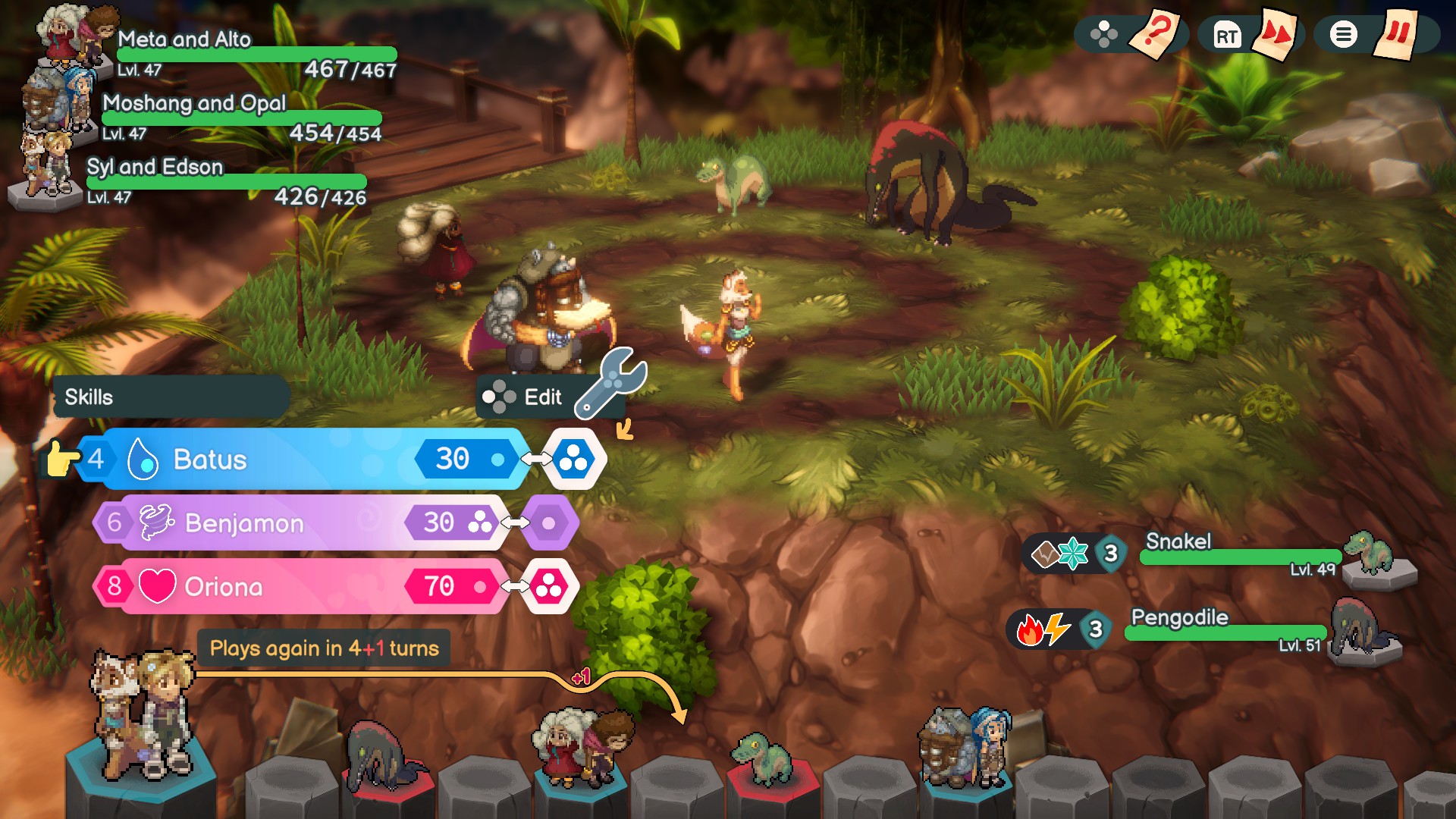

Terra Memoria has a fun timeline and turn-based battle system with lots of good graphical cues and intuitive systems. Each of your three fighters are assigned a random support character (out of 3) at the start of each fight, and this leads to multiple different kinds of elements and attacks being available. The support character allows for these to be swapped about, often attacks swapped for healing, or a different element, or an area attack over a single hit. It’s a neat little system that made almost every battle into something worth paying attention to. You couldn’t just press attack and get away with it.
Each battle is also self-contained in that you get full health to start, and elemental and magic attacks don’t cost any kind of MP or currency. There’s none to speak of in the game. It meant I could concentrate on stronger attacks and go all in from the start of a battle without having to worry about the outcome of a previous one leaving me weakened. It also meant I could venture deep into dungeons without the constant nag of needing to return to town to heal, or bring lots of items. There are no items in Terra Memoria, only ingredients and materials.
Let’s also mention the timeline and enemy weaknesses. Each enemy has two or more very clearly shown weaknesses and a shield or armor rating. Hitting them with the elements they are weak against is super effective (like it’s Pokemon), and does large HP damage, but also usually two points off their shield. Regular attacks that don’t take advantage of a weakness will take off one point of the shield. Along the bottom of the combat screen is a timeline of turns, which to most RPG players will be fairly self-explanatory these days. But where Terra Memoria has its own quirk is in what happens when the enemy shield is depleted – they are thrown right down to the furthest point of the timeline and are suddenly weak to EVERYTHING!
If you can’t think of all the ways you can punish them and put them out of the fight for good with that kind of advantage, there’s no helping you. It was also interesting for its approach to being knocked out. There’s no Revive spell here, so knocked-out characters just had to sit out the fight for 15 turns. Sounds like a lot, but that’s just 15 blocks along the timeline at the bottom of the screen. Then they’d be back into the fight like an enemy who’d recovered from being relegated down the timeline.
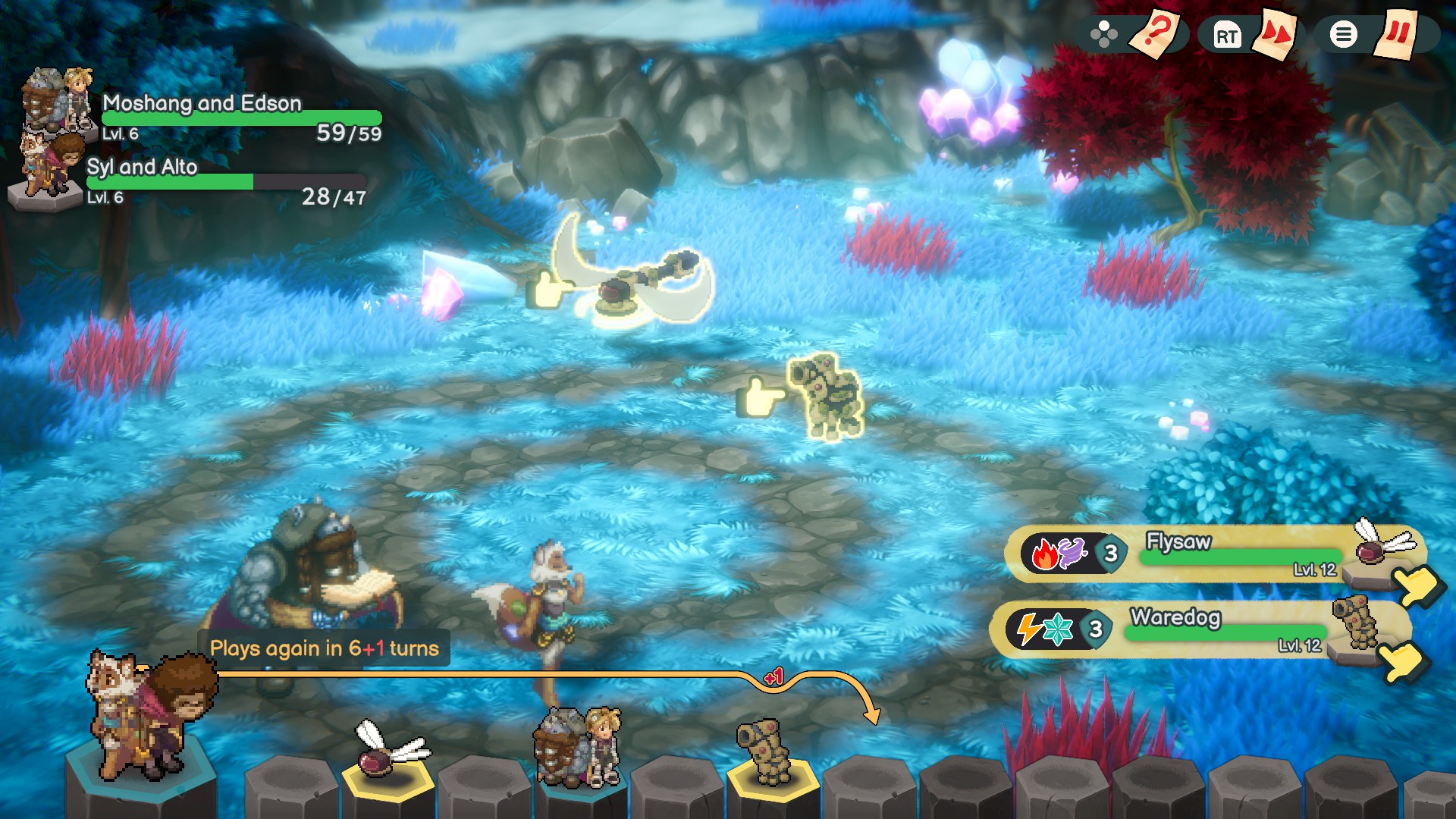

Combat felt strange at first, and almost too simple, like something was missing. Then I realised what it was. Experience. I was getting no experience from fighting. Instead I discovered an hour or so in, that you only reap the benefits of combat when you go to sleep for the night at a campfire, and suddenly all that experience comes at you all at once, bumping you up 3-4 levels. I ended up quite liking the system, and the unknown grinding, combined with suddenly getting a bump up and the next set of battles being that much easier.
That said, levelling doesn’t do much for your basic stats, or your health – instead you need to take advantage of cooking food and forging pins, both of which also mostly happen at campfires. Cooking in Terra Memoria is a permanent stat, increasing your overall health points. This is at odds with almost any cooking mechanic I’ve seen in other RPGs where it’s generally a temporary stat buff that wears off. Permanent health buffs are the best use I’ve ever seen for a cooking mechanic – I was more engaged in finding ingredients and recipes in Terra Memoria than I have been in virtually any other game with cooking that I can think of. It was incentivised in just the right way.
Pins are little blacksmith-made badges that bestow attack power, defense and element resistances, and without them your character’s defense is laughably weak. Between these and experience, campfires become as ubiquitous and necessary to Terra Memoria as bonfires in Dark Souls.
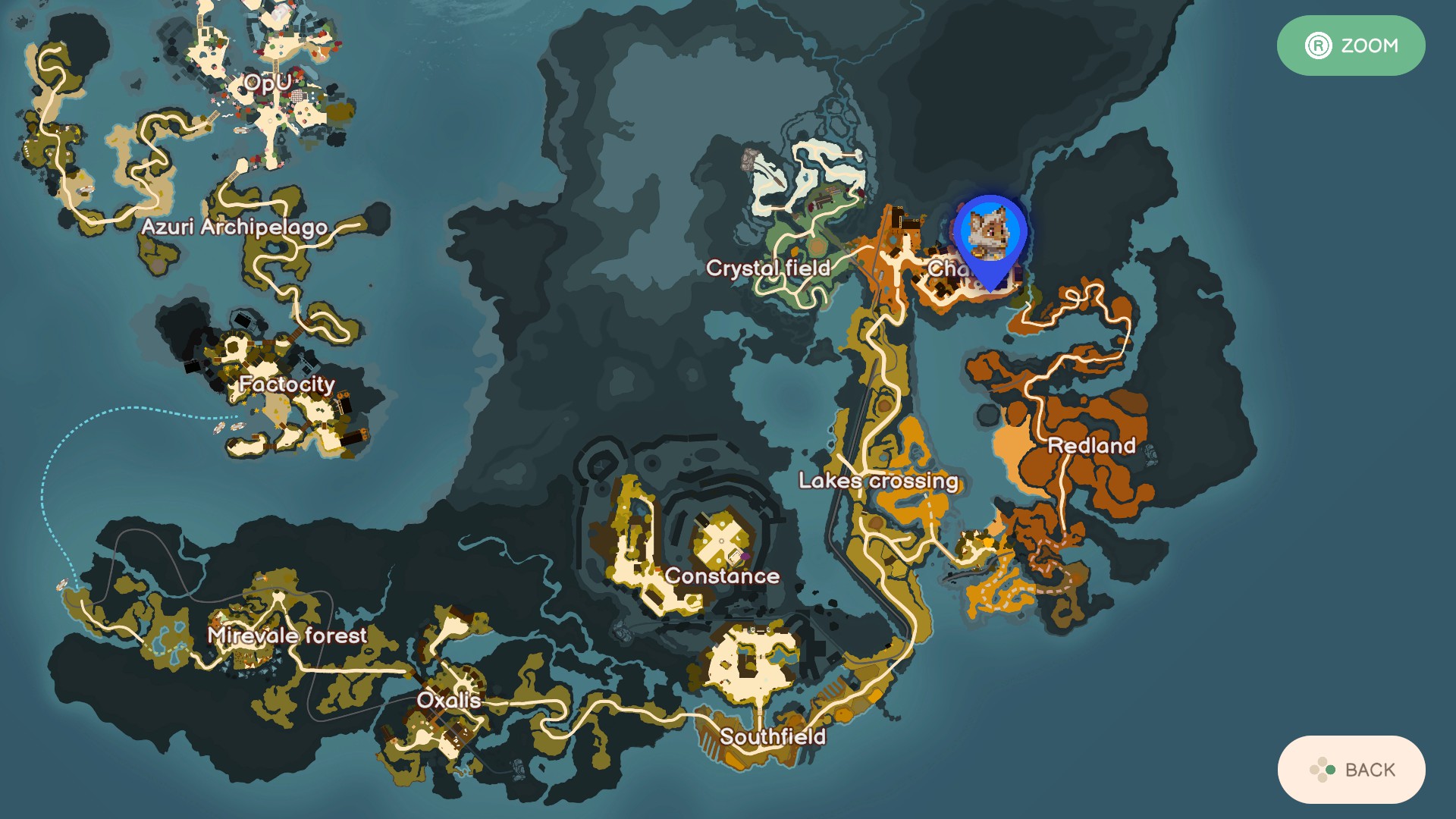

Terra Memoria has a beautiful world made up of the polygons of a late PSX era RPG, with lush Breath of Fire 4 style character models that feel like a wonderful homage and there’s that same relaxed anything-goes attitude to races and species in a fantasy setting. Robots? Yeah, sure. Anthros, yep, wherever we can fit ‘em in. It’s a furry gamer’s dream. Anyone who remembers and appreciated Breath of Fire’s Ershin, Cray or Scias, or Chrono Trigger’s Robo and Frog, will feel right at home here.
Chrono Trigger and Breath of Fire also seem to be the inspiration for the fun looping junkheap tunes that you’ll encounter across your adventure. I found many of them to be pleasant if a little forgettable.
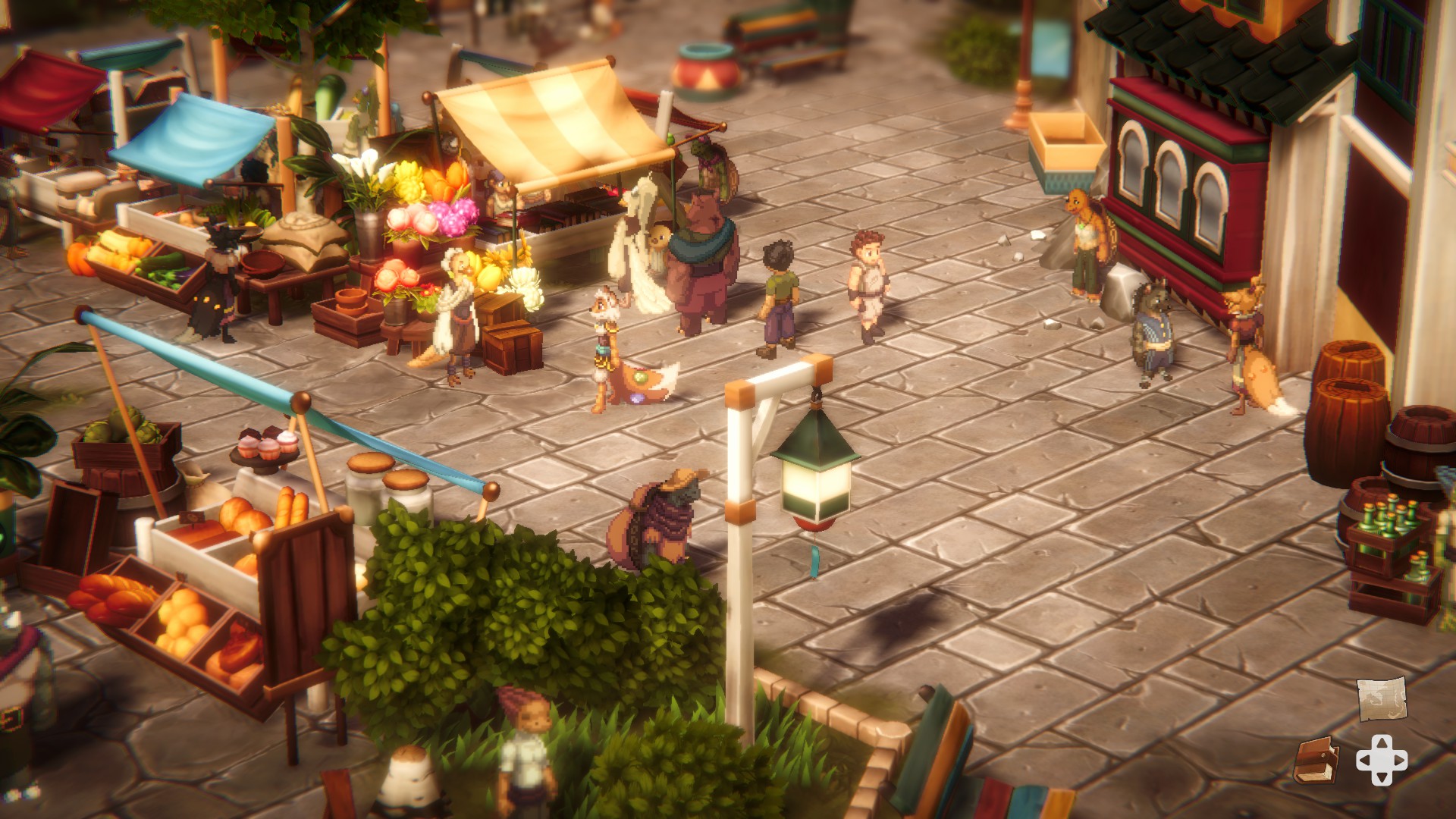

Terra Memoria really takes the slow-burn ambling approach to its story, quaint and quirky, and a little sleepy. It managed to draw me along on an undemanding and simple adventure that was a welcome change from more combat-heavy or system-heavy RPG epics. In the same way, it’s not a 100-hour beast, nor even a 50-hour. It’s more of a bitesize pick-up-and-play style suited to the Switch or SteamDeck, and it clocks in at more like 15 hours all told.
I loved the addictive battle system and its duo attacks, swapping to healing, weaknesses, timeline-shunting, and all the ways it allowed me to dominate the battlefield. Doing a little grinding and then getting a dump of levels at the next campfire never felt like a chore. Time and effort have gone into making it intuitive and rewarding, and into the wonderful BOF4 character models that just sparked so much nostalgia in me.
On the downside Terra Memoria’s story is pretty pedestrian, and it handholds the player through a quest system that never lets you go to the point of being restrictive. A choice was made to ensure players never felt lost, but the balance has possibly tilted too far to the other extreme. Characters didn’t have the depth I wanted from them, but were an enjoyable gaggle to spend a short adventure with. If the graphics and the good aspects I’ve described are appealing to you, you could find a little hidden gem in Terra Memoria.
Terra Memoria is a quirky little adventure full of anthros and crystals, paying homage to PlayStation-era gems like Breath of Fire IV. It succeeds in rendering cooking and crafting essential by working them into its levelling system and addictive turn-based combat, even if its story and characters are a little too simple to be memorable.


Terra Memoria is available on PC via Steam (review platform) PlayStation 5, Xbox Series X|S and Nintendo Switch.
Developer: La Moutarde
Publisher: Dear Villagers
Disclaimer: In order to complete this review, we were provided with a promotional copy of the game. For our full review policy, please go here.
If you enjoyed this article or any more of our content, please consider our Patreon.
Make sure to follow Finger Guns on our social channels –Twitter, Facebook, Twitch, Spotify or Apple Podcasts – to keep up to date on our news, reviews and features.
